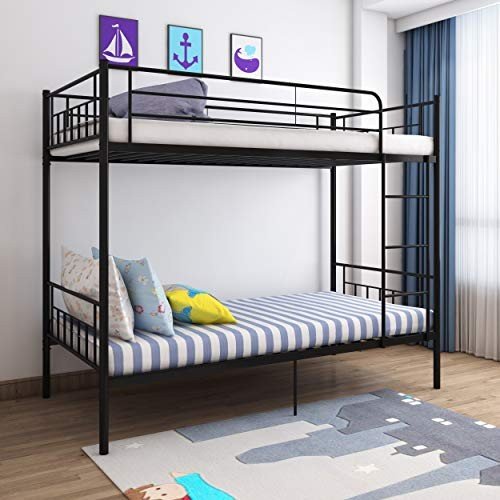Bunk Beds for Kids: A Comprehensive Guide
Bunk beds have been a popular choice for children's bedrooms for many years. They offer a space-saving option that makes the most of flooring area, provides enjoyable climbing options, and can be found in a variety of styles that appeal to children's creativities. This short article explores the benefits, considerations, styles, and safety features associated with bunk beds for kids.
Advantages of Bunk Beds
Bunk beds present several advantages that make them an attractive option for families. Here are some key benefits:
Space Saving
- Bunk beds allow 2 or more kids to share a room without sacrificing space for play or other activities.
Affordable
- Buying a single bunk bed can be more affordable than buying two different beds.
Enjoyable Factor
- Kids frequently see bunk beds as a fun place to sleep and play, promoting a sense of experience.
Adaptability
- Bunk beds are offered in various setups, consisting of L-shaped, loft beds, and even convertible styles that can change as kids grow.
Organization
- Many bunk beds feature integrated storage options, such as shelves and drawers, assisting keep rooms arranged.
Key Considerations Before Purchasing
Before investing in a bunk bed, it's important to think about certain factors, such as:
- Space Requirements
Procedure the space to make sure that there suffices vertical space, permitting for sufficient headroom on the top bunk. - Age of Your Children
Consider their age and maturity. Many producers suggest that children under 6 need to not oversleep the leading bunk due to security issues. - Weight Limit
It's important to examine the weight limitations of the bunk bed for both the top and bottom bunks to guarantee safety. - Style Preferences
Pick a design that matches the space's decoration and the kids's choices. - Product
Bunk beds are available in various materials, such as wood or metal. Each has its advantages and downsides concerning sturdiness and looks.
Designs of Bunk Beds
Bunk beds can be found in various styles to fit various visual appeals and practical needs. Here's a list of some popular styles:
- Standard Bunk Beds
Classic stacked beds that consist of two beds constructed one above the other. - Loft Beds
A bed raised high off the ground, with space underneath for a desk, play location, or storage. - L-Shaped Bunk Beds
Two beds set up in an L-shape, offering more floor space and a special style component. - Twin Over Full Bunk Beds
These alternatives include a twin bed on top and a full-sized bed on the bottom, accommodating older kids or adults. - Triple Bunk Beds
Designed for three kids, these beds typically include three stacked beds, suitable for larger families.
Security Features to Consider
Guaranteeing the security of kids using bunk beds is critical. Here are some safety includes to search for before purchasing:
- Guardrails
A bunk bed must include tough guardrails on the top bunk to prevent accidental falls. - Ladders
Make sure that the ladder is safely attached and simple for children to browse securely. - Stability
Search for bunk beds with lower centers of gravity and wide bases to supply much better stability. - Quality Construction
Select beds made from long lasting materials that satisfy security standards, such as ASTM (American Society for Testing and Materials) guidelines.
FAQs About Bunk Beds
1. What age is proper for a top bunk?Generally, children aged 6 and older are suggested for sleeping in the leading bunk. 2. Are bunk beds safe for toddlers?Most specialists advise versus
putting young children in the top bunk due to the
risk of falls and incorrect ladder use. 3. Can bunk beds be separated?Many bunk beds are created to be separated into two standalone beds,
providing added flexibility as children grow
. 4. How do I preserve a bunk bed?Regularly look for loose screws and wear, keep mattresses clean, and guarantee that the bunk bed is
steady to extend its lifespan. 5.
Exist any special bed mattress requirements for bunk beds?Yes, mattresses for bunk beds ought to fit comfortably without leaving gaps. Generally, thinner mattresses
(around 6 to 8 inches )are advised for top bunks for safety. Bunk beds provide a versatile, practical, and fun option for kids's sleeping plans, maximizing space while accommodating several kids in one room. By considering the essential aspects
of style, security, and space, moms and dads can make a notified choice when picking the best bunk bed for their kids's needs. With Bunk Beds Store and upkeep, a bunk bed can be a precious piece of furniture that supplies years of usage and enjoyment for children. Summary Table of Bunk Bed Styles Style Description Best For Requirement Bunk Beds Classic design, two stacked beds Smaller sized rooms Loft Beds Raised bed with open space beneath Study or play locations L-Shaped Bunk Beds Two beds in an L-shape
Added flooring space Twin Over Full Twin on top,
| complete on bottom Accommodating older children Triple | ||||||
|---|---|---|---|---|---|---|
| Bunk Beds | Three stacked beds | Larger households By understanding | the numerous choices available, designated factors to consider for safety and performance, and proper age guidelines, families | can choose the perfect bunk bed that not | only improves their home | however likewise makes sure a safe and |
| pleasurable sleeping environment | for their children.

|
